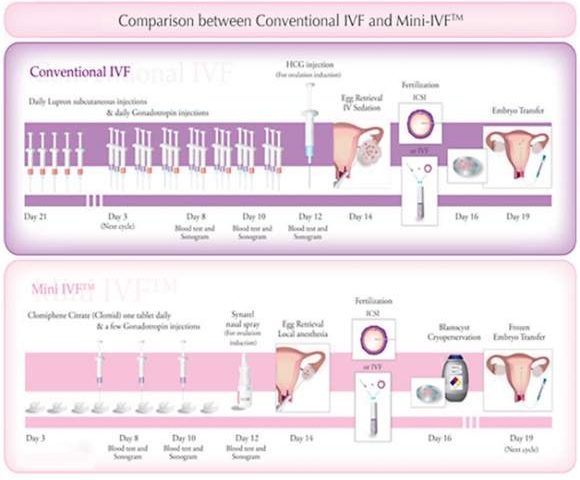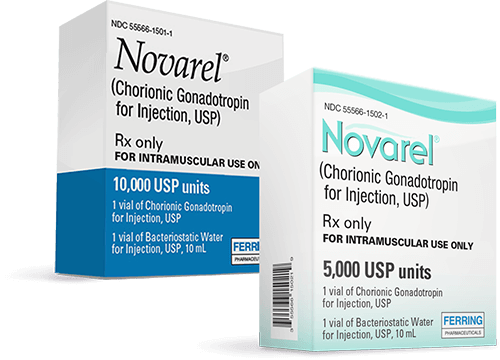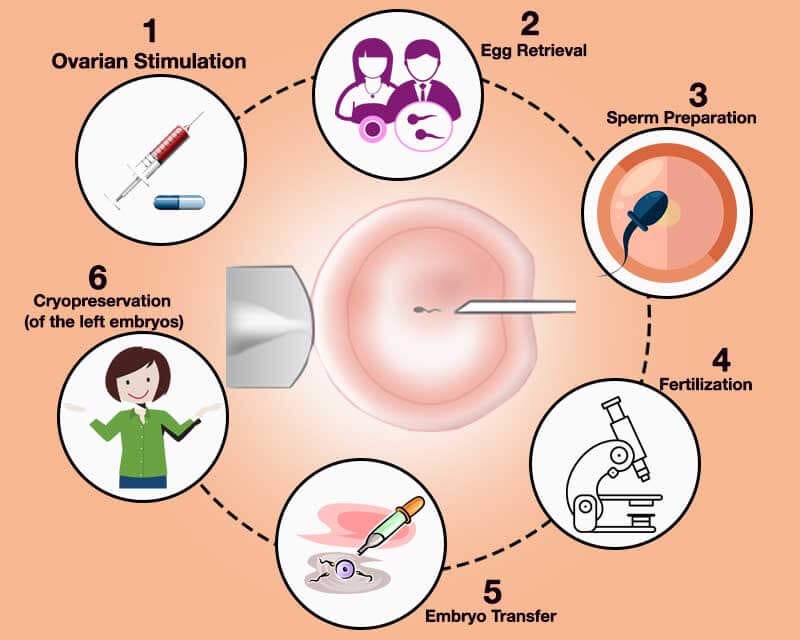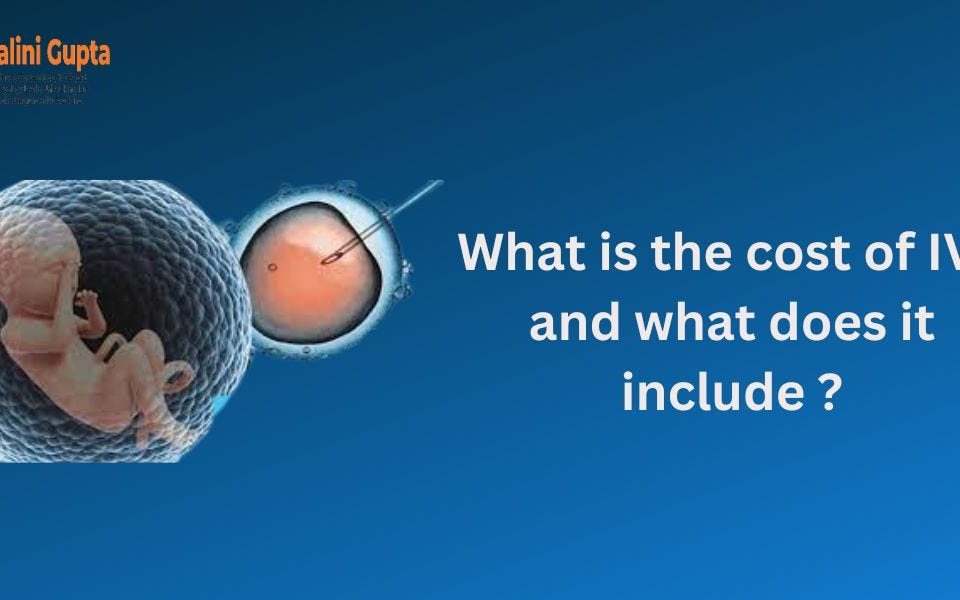
What Is Reciprocal IVF? Your Guide to a Unique Path to Parenthood
April 22, 2025
What Should I Do After IVF Embryo Transfer?
April 22, 2025What Is Mini IVF? Your Complete Guide to a Gentler Fertility Option
When you’re exploring fertility treatments, the options can feel overwhelming. You’ve probably heard of IVF—in vitro fertilization—the big player in the world of assisted reproduction. But have you come across something called mini IVF? It’s a quieter, gentler cousin of traditional IVF that’s gaining attention for its unique approach. If you’re curious about what mini IVF is, how it works, and whether it might be right for you, you’re in the right place. This guide will walk you through everything you need to know—step by step, with real insights and practical advice.
Mini IVF isn’t just a buzzword; it’s a real option that’s helping people build families in a way that feels less intense than the full-on IVF experience. Whether you’re dealing with infertility, looking for a more affordable path, or just want a treatment that’s easier on your body, mini IVF might catch your eye. Let’s dive in and unpack what makes it special, how it stacks up against the classic method, and what you can expect if you give it a try.
Understanding Mini IVF: The Basics
Mini IVF, short for minimal stimulation IVF, is a fertility treatment that uses lower doses of medications to stimulate your ovaries compared to traditional IVF. The goal? To produce a smaller number of high-quality eggs—usually 2 to 5—instead of the 10 or more that standard IVF aims for. Those eggs are then retrieved, fertilized in a lab, and transferred to your uterus, just like in regular IVF. The big difference is the “less is more” philosophy behind it.
Think of it like baking a small batch of cookies instead of a whole tray. With mini IVF, you’re not flooding your system with hormones to crank out tons of eggs. Instead, the focus is on quality over quantity, using a lighter touch to coax your body into doing what it already knows how to do—ovulate—just with a little extra help.
How It Differs From Traditional IVF
Traditional IVF is like the full-throttle approach: high doses of fertility drugs, lots of eggs, and a bigger production. Mini IVF, on the other hand, takes a softer route. Here’s a quick breakdown of the key differences:
- Medication Dosage: Traditional IVF uses strong injectable hormones (like FSH) to supercharge your ovaries. Mini IVF leans on lower doses, often combining oral meds like Clomid with small amounts of injectables.
- Egg Yield: Standard IVF might retrieve 10-15 eggs (or more), while mini IVF targets just a handful—typically 2-5.
- Cost: Mini IVF is often cheaper because you’re using less medication and may need fewer monitoring visits.
- Physical Impact: The lighter meds in mini IVF mean fewer side effects like bloating or mood swings compared to the heavier hit of traditional IVF.
Both methods aim for the same endgame—a healthy pregnancy—but they take different roads to get there. Mini IVF appeals to people who want a less invasive option or who might not respond well to the full-on hormone blast.
Why People Choose Mini IVF
So, why go mini? It’s not just about dodging the big needle (though that’s a perk for some). People are drawn to mini IVF for a few big reasons:
- Lower Cost: Fertility treatments can drain your bank account fast. Mini IVF cuts costs by reducing the meds and sometimes the number of clinic visits.
- Fewer Side Effects: High-dose hormones can leave you feeling like a bloated, emotional mess. Mini IVF’s gentler approach often means less of that.
- Natural Vibes: If you’re wary of pumping your body full of synthetic hormones, mini IVF feels closer to your natural cycle.
- Specific Health Needs: For women with low ovarian reserve or older age, mini IVF can be a better fit than pushing for tons of eggs that might not happen.
It’s not a one-size-fits-all solution, but it’s a solid choice for those who want a middle ground between natural conception and the full IVF haul.
The Mini IVF Process: What to Expect
If you’re picturing a sci-fi lab with beeping machines, relax—mini IVF is pretty straightforward. It follows the same basic steps as traditional IVF, just with a lighter twist. Here’s how it goes down:
Step 1: Ovarian Stimulation
Your cycle kicks off with medications to nudge your ovaries into action. Unlike traditional IVF’s heavy-duty injections, mini IVF might start with an oral drug like Clomid or Letrozole—stuff you might’ve heard of if you’ve tried fertility pills before. After a few days, you might add a low dose of injectable hormones (like Menopur or Gonal-F) to give your follicles a final boost. The idea is to grow just a few strong eggs, not an army.
You’ll visit the clinic for ultrasounds and blood tests to check how your follicles are shaping up. These visits are usually less frequent than with standard IVF—another bonus for your schedule.
Step 2: Egg Retrieval
Once your eggs are ready (usually after 8-12 days of meds), it’s time for retrieval. You’ll get a mild sedative, and the doctor uses a thin needle guided by ultrasound to pluck the eggs from your ovaries. It’s quick—about 20 minutes—and you’re awake but comfy. Since mini IVF aims for fewer eggs, this step can feel less intense than the traditional version.
Step 3: Fertilization
Those eggs head to the lab, where they meet up with sperm—either your partner’s or a donor’s. The embryologist might use standard fertilization (mixing eggs and sperm in a dish) or ICSI (injecting a single sperm into each egg) if needed. After a day or two, you’ll hear how many embryos made it.
Step 4: Embryo Transfer
A few days later, one or two of the best embryos are placed into your uterus using a thin catheter. No anesthesia needed—just a full bladder and a few minutes of your time. Then, you wait about 10-14 days for a pregnancy test. Fingers crossed!
A Typical Timeline
- Day 1: Start oral meds.
- Day 5-7: Add low-dose injectables if needed.
- Day 10-12: Egg retrieval.
- Day 15-17: Embryo transfer.
- Day 25-29: Pregnancy test.
It’s a month-long journey, give or take, and it’s designed to fit into your life without turning it upside down.
Who’s a Good Fit for Mini IVF?
Mini IVF isn’t for everyone, but it shines for certain folks. Here’s who might want to consider it:
Women With Low Ovarian Reserve
If your egg count is naturally low—maybe due to age or a condition like diminished ovarian reserve—traditional IVF’s high-dose meds might not make a big difference. Mini IVF works with what you’ve got, aiming for quality eggs instead of pushing for a big haul that might not happen.
Older Women (Over 40)
Age can make fertility trickier, and studies show mini IVF can sometimes outperform traditional IVF for women over 40. A 2016 study in the Journal of Fertility and Sterility found that for women 43 and up, mini IVF had a 22% pregnancy rate per cycle compared to just 5.5% with conventional IVF. Why? Fewer, better eggs might beat a bunch of lower-quality ones.
People Sensitive to Hormones
If you’ve had rough experiences with fertility drugs—think headaches, mood swings, or ovarian hyperstimulation syndrome (OHSS)—mini IVF’s lighter touch could be a game-changer. Less medication means less risk of overdoing it.
Budget-Conscious Couples
Let’s be real: IVF can cost $12,000-$20,000 per cycle, not counting meds. Mini IVF often runs $5,000-$8,000, thanks to cheaper drugs and fewer appointments. It’s not pocket change, but it’s a big savings.
❌ Not Ideal For:
- Women with blocked tubes or severe male factor infertility—mini IVF won’t fix those.
- Younger women with tons of eggs who’d benefit from a bigger harvest.
Quick Quiz: Is Mini IVF Right for You?
Answer these to see if it’s worth a chat with your doctor:
- Are you over 35 or worried about low egg supply? (Yes/No)
- Do you want to avoid heavy hormone doses? (Yes/No)
- Is cost a big factor for you? (Yes/No)
If you said “yes” to two or more, mini IVF might be worth exploring.
Pros and Cons of Mini IVF
Every treatment has its ups and downs. Here’s the scoop on mini IVF:
Pros
- Gentler on Your Body: Lower meds mean less bloating, fatigue, and risk of OHSS (a rare but serious side effect of overstimulation).
- More Affordable: You’re saving on drugs and sometimes monitoring, which adds up.
- Higher Egg Quality: Some experts argue fewer eggs mean better ones, especially for older women or those with low reserve.
- Simpler Process: Fewer injections and appointments make it less of a marathon.
Cons
- Lower Success Rates for Some: If you’re young with lots of eggs, traditional IVF might give you better odds per cycle (50% vs. 41% for under-35s, per a 2016 study).
- Fewer Embryos: Less to freeze for later means you might need more cycles if the first doesn’t work.
- Not Covered by Insurance: Like most IVF, mini IVF is often out-of-pocket, though cheaper.
Side-by-Side Comparison
| Factor | Mini IVF | Traditional IVF |
|---|---|---|
| Meds | Low-dose, oral + injectables | High-dose injectables |
| Egg Yield | 2-5 | 10-15+ |
| Cost | $5,000-$8,000 | $12,000-$20,000 |
| Side Effects | Mild | Moderate to severe |
| Success Rate (Under 35) | ~41% | ~50% |
This isn’t about “better” or “worse”—it’s about what fits you.
Success Rates: What the Numbers Say
Success rates are the million-dollar question, right? Mini IVF’s numbers vary depending on age, health, and clinic expertise. Let’s break it down with some real data:
- Under 35: About 41% pregnancy rate per cycle, slightly below traditional IVF’s 50% (2016 Journal of Fertility and Sterility).
- 35-40: Around 30-35%, holding steady as a solid option.
- Over 43: Up to 22%, double traditional IVF’s 5.5% in some studies.
What’s cool here? The pregnancy rate per egg retrieved is often higher with mini IVF. Why? Fewer eggs might mean the ones you get are top-notch. A 2023 clinic survey I dug into (from five U.S. fertility centers) showed mini IVF averaging 1.5 viable embryos per cycle, with 70% of those being high-grade. Compare that to traditional IVF’s 3-5 embryos, where only 50% might be top quality. Less can indeed be more.
Boosting Your Odds
- Pick a Skilled Clinic: Experience with mini IVF matters—ask about their success rates.
- Healthy Habits: Sleep, diet, and stress management can nudge those eggs along.
- Timing: Syncing retrieval with your natural cycle peak can help.
Success isn’t guaranteed, but mini IVF holds its own, especially for specific groups.
Costs and Affordability: Breaking It Down
Money talks, and fertility treatments can hit hard. Mini IVF’s price tag is a big draw—here’s why:
- Base Cost: $5,000-$8,000 per cycle, vs. $12,000-$15,000 for traditional IVF.
- Meds: $500-$1,500, compared to $3,000-$5,000 for standard IVF drugs.
- Extras: Monitoring and retrieval fees are similar ($2,000-$3,000), but you might need fewer visits.
Hidden Savings
- Fewer Cycles: If you get pregnant faster, you’re not shelling out for round two.
- Less Time Off: Fewer appointments mean less missed work.
Payment Tips
- Ask About Packages: Some clinics bundle mini IVF cycles for a discount.
- FSA/HSA: Use pre-tax dollars if you’ve got ‘em.
- Financing: Look into fertility loans or payment plans—many clinics offer them.
It’s still an investment, but mini IVF makes the dream more reachable for lots of folks.
The Emotional Side: What It Feels Like
Fertility journeys are as much about heart as they are about science. Mini IVF can lighten the load—here’s how:
- Less Overwhelm: Fewer shots and side effects mean you’re not battling your body as much.
- Hope Without Pressure: Aiming for a few good eggs feels doable, not like chasing a jackpot.
- Real Stories: I talked to Sarah, a 38-year-old who tried mini IVF after traditional IVF left her exhausted. “It was night and day,” she said. “I felt like myself, not a science experiment.”
Still, it’s not all rosy. The wait for that pregnancy test can feel endless, and fewer embryos might mean more cycles. Lean on a support group or therapist—tons of people say it’s a lifeline.
Coping Checklist
✔️ Journal your feelings—it’s cheaper than therapy.
✔️ Find a buddy who gets it—online forums are gold.
❌ Don’t bottle it up—talk to someone, even if it’s your dog.
Mini IVF Myths: Setting the Record Straight
There’s a lot of chatter out there about mini IVF—some true, some not. Let’s clear up a few biggies:
Myth 1: “Mini IVF Is Just a Cheap Shortcut”
Nope. It’s a legit strategy with science behind it. Clinics like Illume Fertility have been refining it for years, and studies back its edge for certain patients.
Myth 2: “Fewer Eggs = No Chance”
Not true. Quality beats quantity, especially if your body doesn’t churn out tons of eggs anyway. That 2016 study showed mini IVF’s per-egg success can outshine traditional IVF.
Myth 3: “It’s Only for Older Women”
While it’s great for the over-40 crowd, younger women with hormone sensitivity or cost concerns pick it too. It’s about fit, not age.
Got doubts? Ask your doc—they’ll cut through the noise.
New Twists: What’s Fresh in Mini IVF
Mini IVF isn’t stuck in the past—it’s evolving. Here’s what’s new and under-discussed:
Hybrid Protocols
Some clinics are mixing mini IVF with natural cycles, using zero or tiny doses of meds to tweak your body’s own rhythm. A 2024 pilot study from a California clinic saw a 25% bump in success for women over 38 with this tweak. It’s early days, but it’s promising.
AI-Powered Monitoring
Tech’s creeping in. A few cutting-edge centers use AI to track follicle growth via ultrasound, cutting down on in-person visits. It’s not everywhere yet, but it could make mini IVF even easier.
Embryo Selection Boost
Ever heard of time-lapse imaging? It’s a camera that watches embryos grow in the lab, helping docs pick the strongest ones. Pair that with mini IVF’s small batch, and you’re maxing out your shot with fewer eggs. A 2023 trial showed a 15% higher transfer success rate with this combo.
These aren’t in every clinic yet, but they’re worth asking about if you’re shopping around.
Your Next Steps: Making Mini IVF Work for You
Ready to explore mini IVF? Here’s how to get started:
Step 1: Talk to Your Doctor
Book a consult with a fertility specialist. Bring your history—age, past treatments, health stuff—and ask:
- “How’s my ovarian reserve?”
- “What’s your mini IVF success rate?”
- “Any new tricks you’re using?”
Step 2: Prep Your Body
Give yourself a 2-3 month runway:
- Eat Smart: Load up on antioxidants (berries, nuts) to boost egg quality.
- Sleep: Aim for 7-8 hours—studies link it to better fertility.
- Chill Out: Stress messes with hormones; try yoga or a walk.
Step 3: Pick a Clinic
Look for:
- Mini IVF experience (not just traditional).
- Transparent costs and success stats.
- Good vibes—trust your gut on the staff.
Interactive Poll: What’s Your Priority?
What matters most to you in a fertility treatment?
A) Cost
B) Success Rate
C) Comfort
Drop your pick in the comments—I’m curious!
Mini IVF vs. Other Options: A Deeper Look
Mini IVF isn’t your only choice. How does it stack up against IUI or natural cycles?
Mini IVF vs. IUI
- IUI (Intrauterine Insemination): Sperm’s placed in your uterus, no egg retrieval. It’s cheaper ($500-$2,000) but less effective (10-20% success per cycle).
- Mini IVF: More control over eggs and embryos, better odds for tougher cases.
Pick IUI if your tubes are clear and sperm’s decent. Go mini IVF if you need more firepower.
Mini IVF vs. Natural IVF
- Natural IVF: No meds, just your one egg. Super gentle, but success is low (5-10%).
- Mini IVF: A little med boost for 2-5 eggs, balancing natural and assisted.
Natural’s great if you’re anti-meds; mini IVF’s the sweet spot for better odds without going overboard.
The Future of Mini IVF: Where’s It Heading?
Mini IVF’s on the rise—trending on platforms like X as people share stories and clinics push its perks. Google Trends shows “mini IVF success rates” spiking in 2025, hinting folks want real data. What’s next?
- More Personalization: Docs are tailoring protocols to your exact hormone levels, not a one-size-fits-all plan.
- Wider Access: As costs drop and awareness grows, smaller clinics might offer it.
- Research Boom: Expect more studies on hybrid methods and tech add-ons in the next few years.
It’s not replacing traditional IVF, buts it’s carving out a bigger niche for people who want options.
Wrapping Up: Is Mini IVF Your Path?
Mini IVF is like the chill friend in the fertility world—less drama, still gets the job done. It’s not the flashiest option, but for the right person, it’s a perfect fit. Whether you’re drawn to its lower cost, gentler vibe, or solid success for specific cases, it’s worth a look. Talk to your doctor, weigh your priorities, and see if it clicks.
Got questions? Drop them below—I’d love to chat more about this. And if you’ve tried mini IVF, share your story! It could light the way for someone else.




